The Japanese izakaya is, to put it simply, Japan’s answer to a British pub. Famed for delicious Japanese drinks and jaw-dropping Japanese food, Japanese izakaya are places that buzz with life and laughter; the perfect place to while away an evening with friends.
Spend time with your colleagues after work; sip on cheap local drinks (like Japanese beer, sake, and cocktails); and share platters of irresistible finger food. The definition of post-work pleasure. Wander in, take a seat, and let your laughter and conversations fade into the background noise of carefree socialisers. Ahh… a cold beer after a busy day of working or exploring. Perfect.
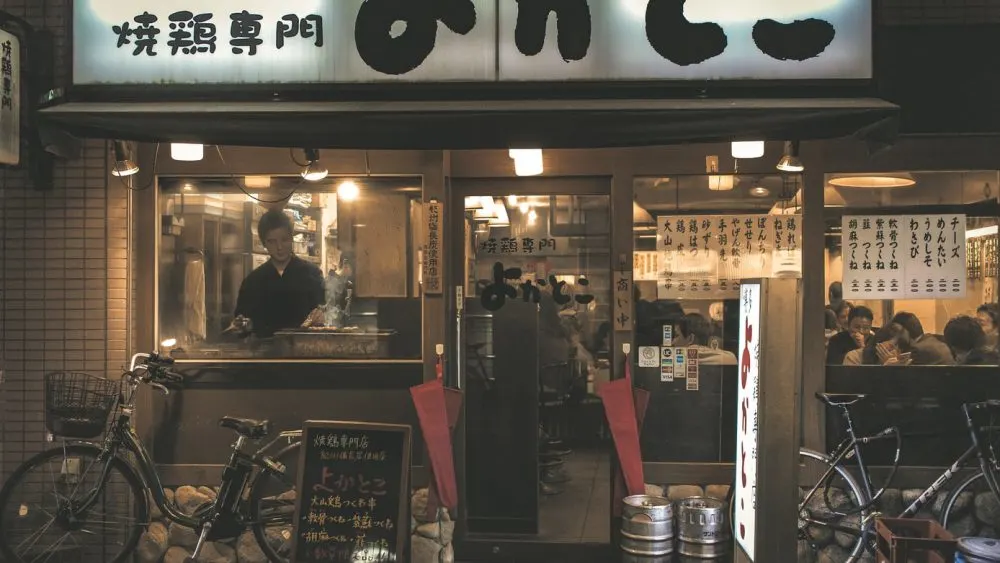
Much like how the English word ‘pub’ derives from ‘public house’, the Japanese word ‘izakaya’ (居酒屋) consists of the kanji for ‘stay’, ‘drink’, and ‘place’, and that’s exactly it is: a place to stay and drink — and to let life’s troubles melt away.
Back in Japan’s Edo Period (1603-1868), people first used to drink and eat outside liquor shops, forming a place where different classes would mingle; from samurai to commoners. Today, this inclusive feel lives on in the Japanese izakaya. Everyone is happy and equal: eating, drinking, and laughing together.
Read More: Where to Drink in Tokyo – 25 Bars and Izakaya by District
After-work Drinking Culture in Japan
Izakaya are famed as a heavenly post-work stop-off for Japanese workers craving some much-needed and much-earned refreshment.
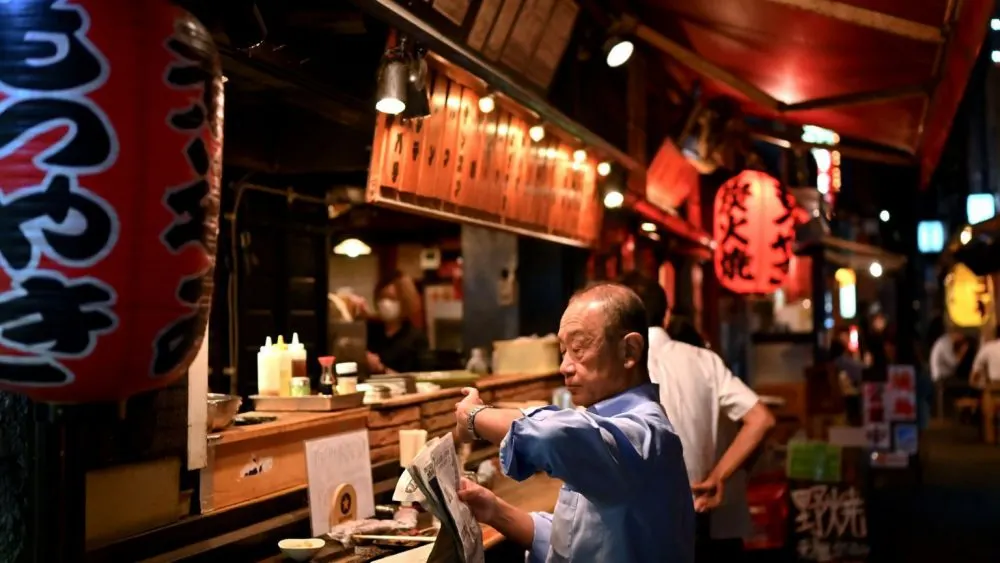
However, amid Japan’s initial coronavirus restrictions in April 2020, izakayas were faced with a potential existential crisis due to the need for remote working to fight the spread of infection. No longer was the routine of ‘work – izakaya – home’ the norm for many people.
However, a September 2020 survey revealed that only 34.4% of businesses implemented a work from home policy, while a further 22.85% implemented one during the outbreak but discontinued it as restrictions lift. As a result, the enduring importance of the office in Japan’s working culture and the sustained life of the Japanese izakaya come hand in hand. We can certainly expect izakayas to live on going forward.
Japanese Izakaya: fit for (almost) every occasion
In Japan, izakaya aren’t just for thirsty salarymen. These drinking spots can often range from a hole-in-the-wall to private rooms — making them fit for multiple occasions.
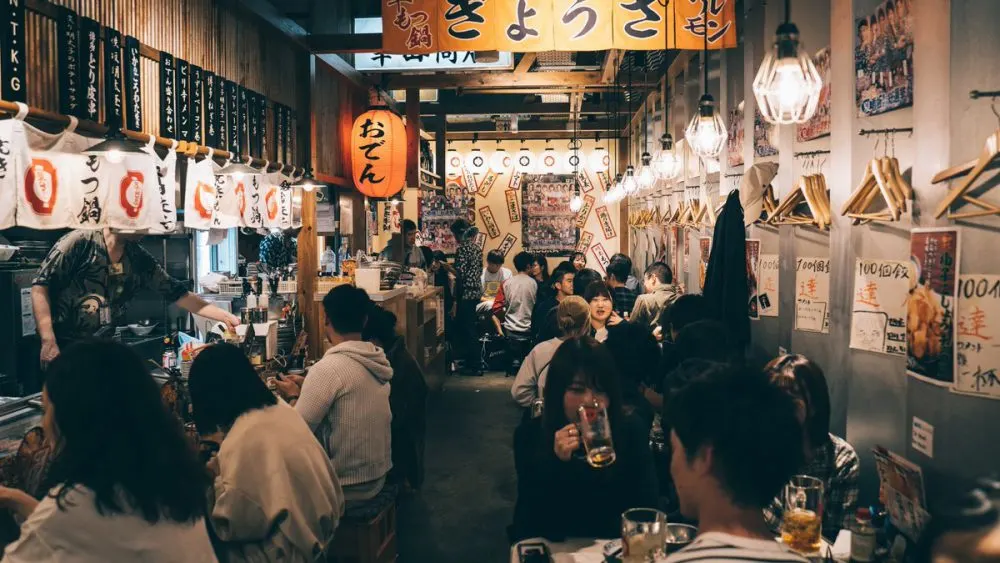
Some locals pop in for a quick beer and plate of tempura, while others sit there from 5pm till the last train home, perhaps making use of the all-you-can-drink option (known as nomihoudai): ranging from ¥1000 to ¥2000 for 90 minutes to 2 hours, depending on the izakaya.
Japanese izakaya provide hungry and thirsty visitors with the perfect place to catch-up with family and friends; share meaningful conversation; celebrate a birthday; host nomikai: (corporate or college parties); or simply get downright drunk. These last two often go hand-in-hand.
The only thing we would advise against is an intimate date or meeting someone for the first time since izakaya tend to boast a loud and unapologetically relaxed atmosphere.
Where can I find a Japanese izakaya?
From bustling metropolises like Tokyo to small provincial towns, izakaya are everywhere in Japan. They can be found within train stations, dotted throughout entertainment districts, shopping areas, and the restaurant floors of department stores across Japan.
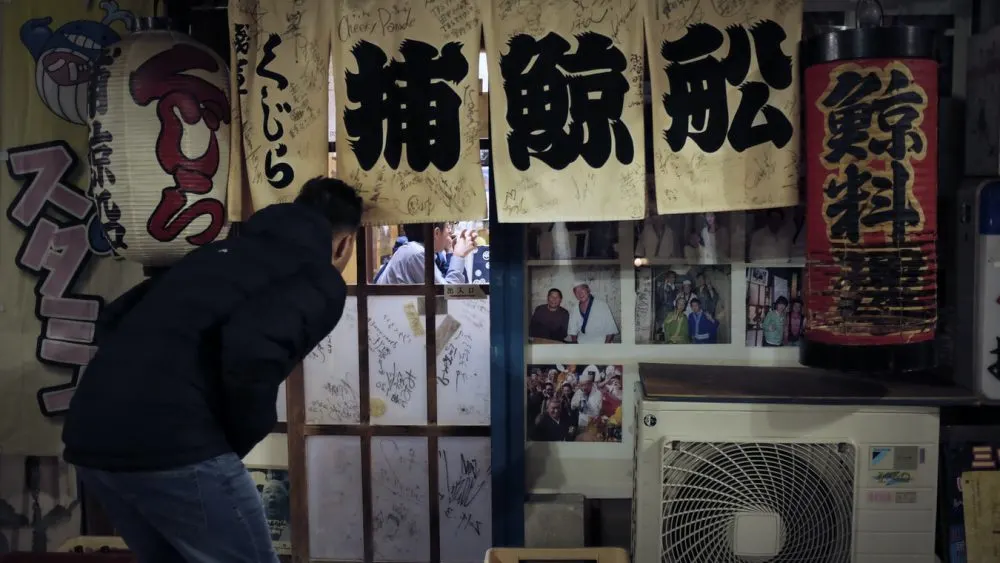
Stroll down narrow alleyways (yokocho) and drink with locals in cramped cubbyholes. Look for red and white lanterns and drapes that signal you’re in the right area. If you’re in Tokyo, izakaya are perfect for exploring the local food and drink options.
Hoppy Street in Asakusa is overflowing with lively izakaya, as are the arches under Yurakucho Station (called ‘Yurakucho Gado Shita’), and the Kabukicho entertainment district in Shinjuku. Unsurprisingly, Tokyo has a few special izakayas up its sleeve.
Read More: What to Eat in Tokyo (+ Ramen Guide)
What to expect in an izakaya?
On entering an izakaya, you may be required to place your shoes in a shoe locker (or you may not). You are seated at either a regular table, lower table with tatami mats (where you can sit or kneel), a seated bar, or a standing bar (tachinomi), which is more common in smaller izakaya.
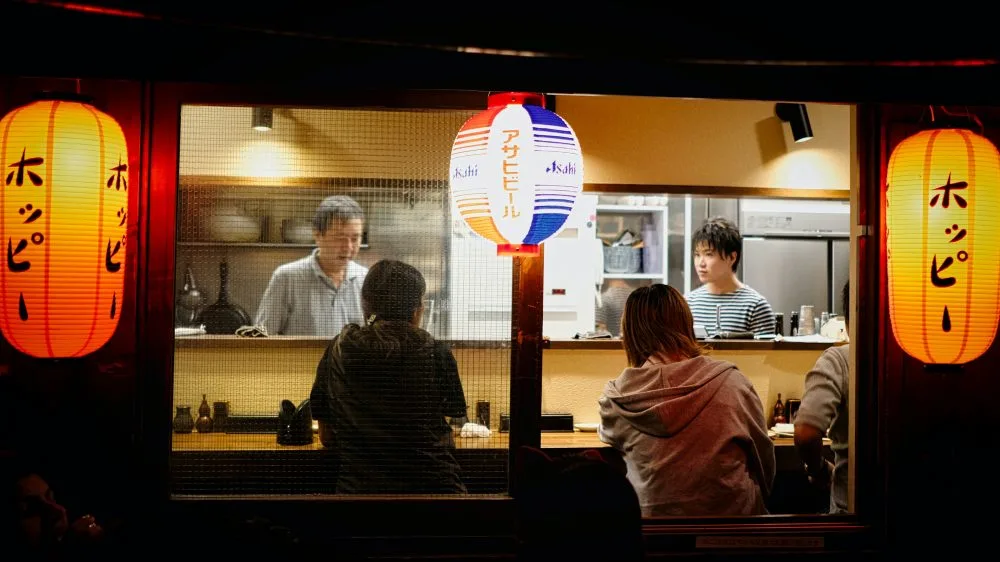
Next, you are handed a towel (oshibori) to clean your hands with — which will be hot or cold depending on the season.
Expect a tasty appetiser upon being seated (called an otoshi), eaten with your first drink and designed to get you licking your lips in anticipation for the night ahead. These are compulsory snacks, but they only set you back around ¥300-600.
Depending on where you’re sitting, you may be able to see and smell delicious food, sizzling away in front of your very eyes.
In large chain izakaya (like Uotami and Torikizoku — look for the yellow logo with red kanji), picture menus and service call buttons (set into the table) are common. In more understated independent izakayas, manual menus and call-the-waiter service is the norm.
Unlike in countries like the UK, calling out for table service is normal in a Japanese izakaya. Simply raise your hand and confidently yell, “sumimasen!” (excuse me) and someone will happily assist you.
It has always been ordinary, when visiting an izakaya, to be engulfed in a cloud of cigarette smoke. However, in an effort to help create a tobacco-free Olympics, Japan’s new smoking law (from April 2020) has prohibited smoking in izakaya restaurants. Today, you’ll find many izakaya with a separate smoking room.
Read More: Useful Japanese Phrases Every Traveller Should Know
What is found on a typical izakaya menu?
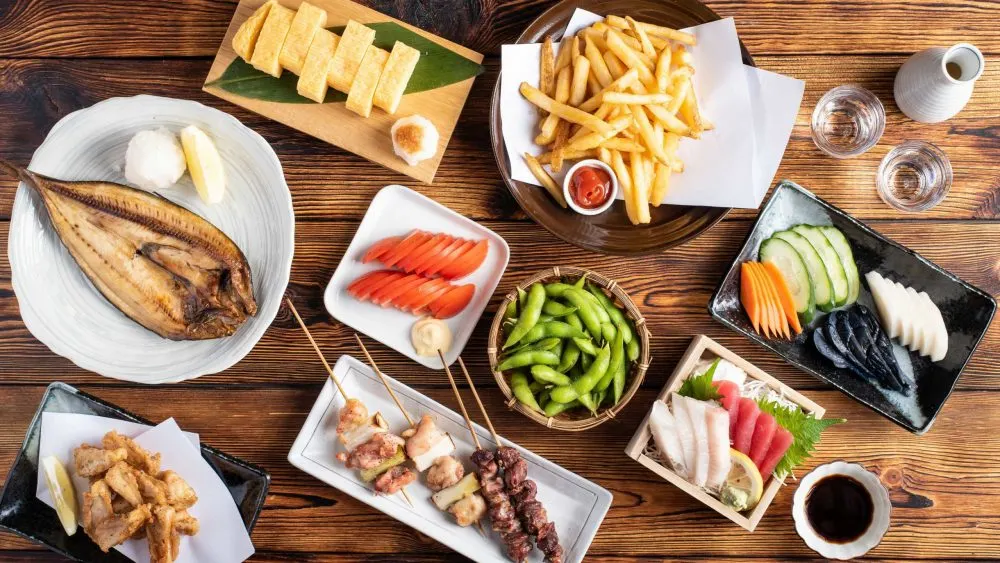
When visiting a Japanese izakaya, you can expect to send your taste buds into overdrive with rounds of scrumptious, mouth-watering local foods and bar snacks. Expect to find these fantastic foods on a typical izakaya menu:
- Kushiyaki (grilled meat or vegetable skewers)
- Kara-age (deep-fried chicken)
- Tamagoyaki (fluffy Japanese omelette)
- Grilled fish such as hokke (grilled mackerel)
- Tempura (deep-fried vegetables)
- Izakaya sushi
- Sashimi (raw fish)
- Hotpots/nabemono
- Ochazuke (steamed rice drenched in green tea)
- Yakisoba
- Age-dashi tofu (tofu deep-fried in soup)
- Motsu nikomi (boiled meat intestines)
- Pickled cucumbers
- Edamame beans
This style of eating is incredibly addictive, which is part of the reason why so many Japanese salarymen eat dinner this way (also because they’re too tired and busy to cook). You’ll wash down these tasty treats with another drink — and then be in the mood for more! It’s a fun but vicious spiral. Typical izakaya drinks include:
- Beer
- Sake
- Cocktails
- Menshu (plum liquor)
- Highballs
- Sours and shōchū (a spirit from rice and sweet potatoes)
Since rounds of drinks and sharing foods are ordered, it’s common courtesy in Japan to split the bill evenly (unless someone has eaten and drunk significantly more than the rest). In Japan, tipping is not customary and no tip is required. In fact, tipping is typically seen as offensive and patronising, so avoid tipping even if your instincts are telling you that you should.
Read More:
13 Japanese Cookbooks for Great Home Cooking
The Ultimate Guide To Ramen In Japan
A Guide to Japanese Onigiri Rice Balls (おにぎり)
5 Shibuya Ramen Joints Worth the Hype
Types of Sushi and How to Eat It – A Guide
Have we got you excited about visiting a Japanese izakaya and sampling from an izakaya menu? Start planning a trip to Tokyo to achieve your ideal izakaya experience.
